Traceroute - Am I lost?
22 Sep 2020 - Jake Sherwood
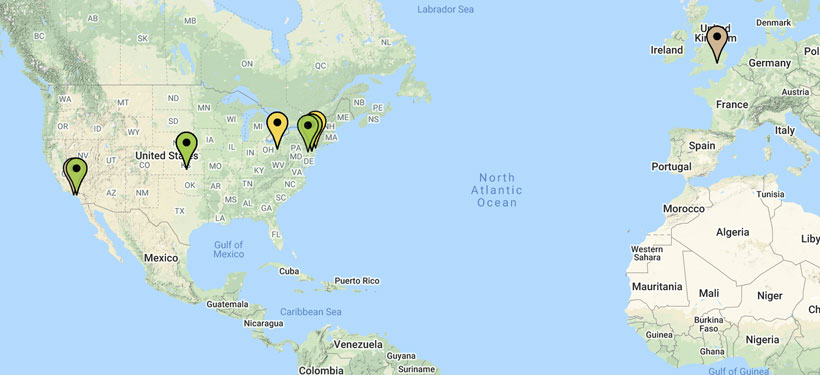 Traceroute - Am I lost?
Traceroute - Am I lost?
Traceroute - Am I lost?
This week for Understanding Networks we needed to run a serious of traceroutes from various sources (local terminal, raspi, phone hotspot etc) and analyze the patterns we found.
The sites I decided to traceroute were sites I visit often but also some further away to try to produce more interesting routes.
Traceroute sites:
- google.com
- itp.nyu.edu / nyu.edu
- jakesherwood.com
- p5js.org
- thrashermagazine.com
- kakao.com
- bbc.uk.co
Analysis Synopsis
The internet is mysterious and this process made me even more in awe that it works, mostly smoothly.
Oddly the majority of my traceroutes ended in a long line of *** hops. Which made full analysis some what difficult. See full traceroute text file here.
I used a number of tools
Tools used:
- cmd line traceroute (local, local pi, phone hotspot, local from nyu vpn)
- traceroute-mapper
- traceroute.py
- map-maker
- point plotter
- whatismyipaddress.com
- arin.net
All of which are linked below.
Quickthoughts traceroutes on my laptop are slow when they get no responses. Traceroutes from my pi are much quicker. Probably due to being hardwired. Traceroutes from my phone hotspot result in different routes, but also the final hop is usually different.
As mentioned above the majority of my traceroutes ended in *** or no response hops. Only a few fully completed.
Most of them went through 68.173.202.128 which is a Road Runner / Charter / Spectrum IP. Which makes sense as that is my ISP.
I thought it was odd that I couldn’t get a completed traceroute to my site or to nyu.edu. So I tried to use the nyu vpn to see if it was any different. The results were the same and actually got to no response hops much quicker from within the nyu vpn.
From local pi:
traceroute to nyu.edu (216.165.47.10), 30 hops max, 60 byte packets
1 testwifi.here (192.168.86.1) 0.458 ms 0.341 ms 0.521 ms
2 * * *
3 be60.nydbny7002h.nyc.rr.com (68.173.202.130) 14.377 ms 14.395 ms 12.830 ms
4 agg111.nyquny9101r.nyc.rr.com (68.173.198.106) 17.253 ms 13.366 ms 13.265 ms
5 bu-ether15.nycmny837aw-bcr00.tbone.rr.com (66.109.6.76) 17.350 ms bu-ether25.nycmny837aw-bcr00.tbone.rr.com (107.14.19.22) 28.428 ms 19.917 ms
6 66.109.5.139 (66.109.5.139) 15.002 ms bu-ether11.nwrknjmd67w-bcr00.tbone.rr.com (66.109.6.26) 27.017 ms 24.532 ms
7 * * *
8 ae-2-3601.ear3.NewYork1.Level3.net (4.69.150.206) 15.484 ms 14.750 ms *
9 NEW-YORK-UN.ear3.NewYork1.Level3.net (4.28.130.118) 13.676 ms 11.689 ms 11.559 ms
10 dmzgwb-p2p-extgwc.net.nyu.edu (128.122.254.75) 16.445 ms 17.318 ms 16.455 ms
11 nyugwa-ptp-dmzgwb-vl3082.net.nyu.edu (128.122.254.110) 15.767 ms 15.863 ms 15.698 ms
12 nyufw-outside-ngfw-vl3080.net.nyu.edu (128.122.254.116) 16.405 ms 16.467 ms 15.650 ms
13 * * *
14 * * *
15 * * *From local cmd line in nyu vpn:
traceroute to nyu.edu (216.165.47.10), 64 hops max, 52 byte packets
1 dmzgwa-200-dmz.net.nyu.edu (192.168.184.66) 63.058 ms 33.314 ms 57.313 ms
2 nyugwa-ptp-dmzgwa-vl3081.net.nyu.edu (128.122.254.108) 97.728 ms 156.268 ms 24.652 ms
3 nyufw-outside-ngfw-vl3080.net.nyu.edu (128.122.254.116) 157.307 ms 152.429 ms 30.215 ms
4 nyugwa-vl1500.net.nyu.edu (192.168.184.226) 157.361 ms 23.554 ms *
5 * wsqdcgwa-vl902.net.nyu.edu (128.122.1.38) 25.366 ms 23.224 ms
6 * * *
7 * * * I also used arin.net to get more details regarding the IPs. I found not surprisingly a number of spectrum and google IPs in most of my routes.
Analysis Rabbit Hole
I did find some fun tools along the way.
I found this python script that will analyze a traceroute and return json data that is a little more readable than the typical traceroute results. The –ip= arg works with both IP or domain name.
I did find I had to run it with python (python2) not python3 due to lib changes
python traceroute.py --ip=nyu.edu
python traceroute.py --ip=216.165.47.10It shows you host, longitude, latitude, rtt (round trip time), hop_num, and the hop IP.
{
"hostname": "core-87-router",
"longitude": -97.822,
"rtt": "0.842 ms",
"hop_num": 1,
"latitude": 37.751,
"ip_address": "128.112.128.2"
},
{
"hostname": "rtr-border-hpcrc-router.princeton.edu",
"longitude": -74.7632,
"rtt": "1.537 ms",
"hop_num": 2,
"latitude": 40.2514,
"ip_address": "128.112.12.110"
},
I kinda went down a rabbit hole, I know again…, after this and with the help of this thread wrote my own little python script to parse out only the long / lat values so I could plot them on a map with this plotter.
Python script for parsing long lat:
import json
import argparse
parser = argparse.ArgumentParser(description='parson json file for longitude latitude')
parser.add_argument('input_file', help='json file to parse')
parser.add_argument('output_file', help='json file to write to')
args = parser.parse_args()
myInput = args.input_file
myOutput = args.output_file
input_file=open(myInput, 'r')
output_file=open(myOutput, 'w')
json_decode=json.load(input_file)
result = []
latlong_result = []
latlong_rev_result = []
for item in json_decode:
my_dict={}
my_dict['longitude']=item.get('longitude')
my_dict['latitude']=item.get('latitude')
mylist = list(my_dict.values())
print (*mylist, sep=',')
result.append(my_dict)
back_json=json.dumps(result)
output_file.write(back_json)
output_file.close()I made it so I could pass input and output args, but I am mostly using just the printed values in terminal. I guess I could pipe / redirecet “>” these into a file instead or adjust the script to just write those instead of another json file. Once I had all my traceroutes I wanted to plot, I did end up appending “»” to a single longlat.txt file I used for plotting.
WIth all that sorted out I also redirected the traceroute.py results to my json files, with a simple shellscript, to use with my parse script.
I Tried going into the inspector and making some adjustments to make the map look a bit better.
That didn’t quite give me the feeling I wanted so I also tried this map maker tool. That tool of course wanted them in the reverse order lat, long but also allowed me to plot them on google maps. And custom color the dropped pins. So I of course made another python script to reverse the order and add a random hex color code.
import json
import argparse
import random
color = "%06x" % random.randint(0, 0xFFFFFF)
parser = argparse.ArgumentParser(description='parson json file for longitude latitude')
parser.add_argument('input_file', help='json file to parse')
parser.add_argument('output_file', help='json file to write to')
args = parser.parse_args()
myInput = args.input_file
myOutput = args.output_file
input_file=open(myInput, 'r')
output_file=open(myOutput, 'w')
json_decode=json.load(input_file)
result = []
latlong_result = []
latlong_rev_result = []
for item in json_decode:
my_dict={}
my_dict['latitude']=item.get('latitude')
my_dict['longitude']=item.get('longitude')
my_dict['color']=color
mylist = list(my_dict.values())
print (*mylist, sep=',')
result.append(my_dict)
back_json=json.dumps(result)
output_file.write(back_json)
output_file.close()I guess I could make this one script and just change the order and add color with args. I’ll probably do that at some point.
But after further analysis, I realize that this data seemed a bit off. There were a LARGE number of of these values -97.822,37.751, which lo and behold is Cherry Reservoir. Looking on the traceroute.py github repo there were no issues about this but the IP ranges associated didn’t show up in my actual cmd line traceroutes. There were also a number of IPs with that longitude and latitude so they must just not have specific geo data associated with them. However looking a few of them up on whatismyipaddress.com gives me a more realistic geo location. So who knows?
So while fun to use and made me mess around with python a bit more. I don’t think the data 100% reliable.
I also used the traceroute mapper tool we looked at in class. It was giving me some odd results and I think all the blanked out hops weren’t helping. I also added it to my bash.profile so I could just run it cmd line.
Here are some of the maps it produced:
Traceroute-mapper maps
thrashermagazine.com This one seemed somewhat correct and the actual traceroute did return almost full results, but the mapper appeared like it just started on the #4 hop?
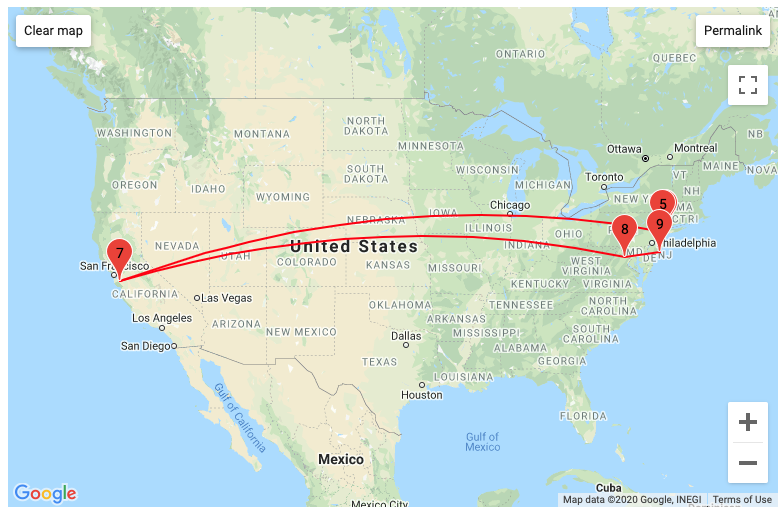 thrashermagazine_com traceroute-mapper image
thrashermagazine_com traceroute-mapper image
bbc.co.uk This one was very odd. Just plotted one point smack dab in the middle of the US. Traceroute cmd actually made it to hop #6 (a charter exchange) before going silent in the *** hops. If I took the traceroute from the terminal and paste it into traacroute-mapper instead of running the mapper cmdline I get a little better results.
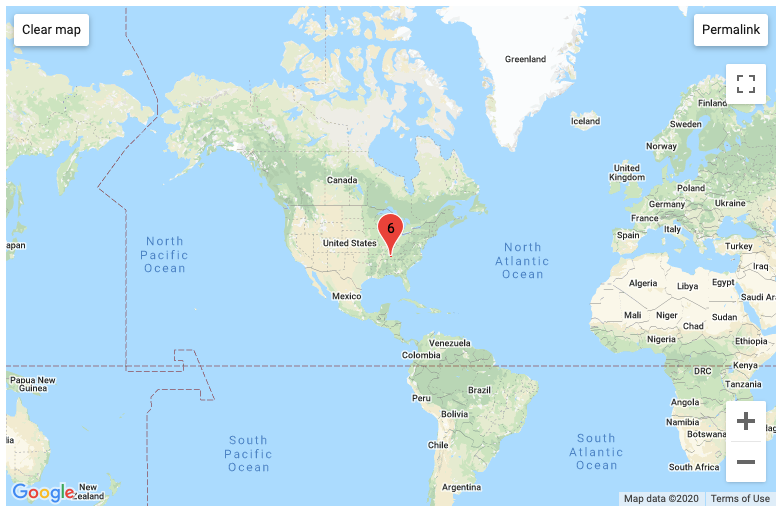 bbc.co.uk traceroute-mapper image
bbc.co.uk traceroute-mapper image
nyu.edu Again oddness in what was plotted.
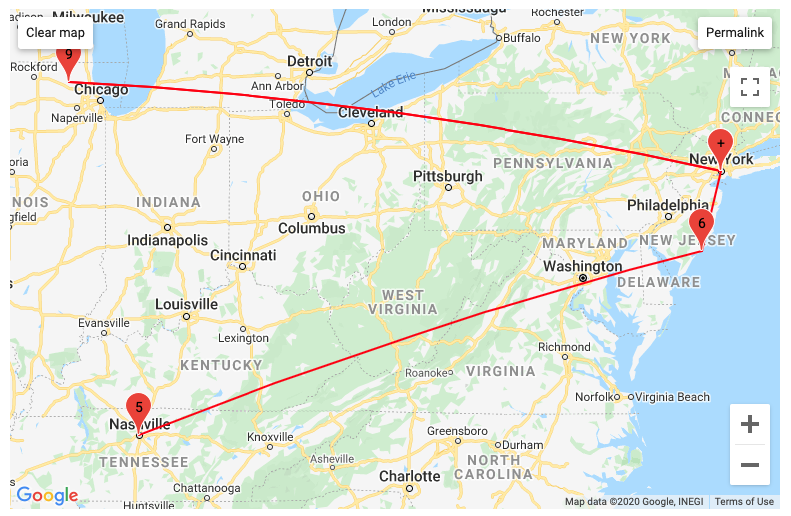 nyu.edu traceroute-mapper image
nyu.edu traceroute-mapper image
kakao.com This one was mostly for fun. I just wanted a longer geographic distance to map.
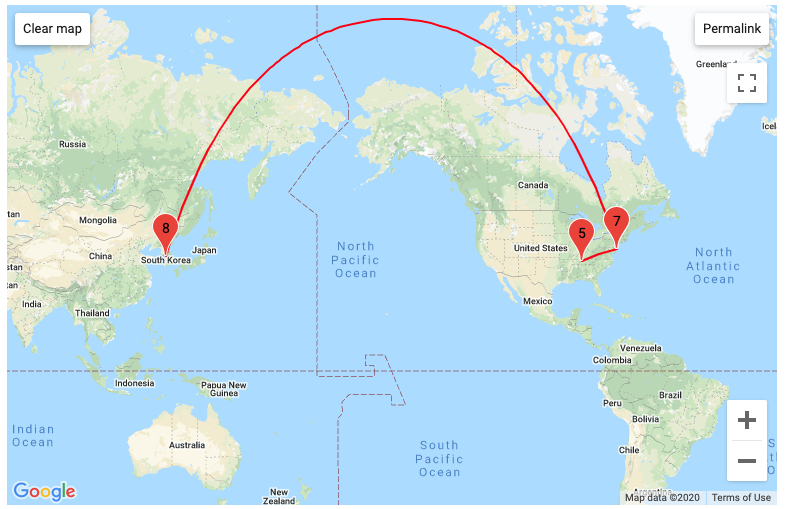 kakao.com traceroute-mapper image
kakao.com traceroute-mapper image
Final Thoughts
The internet is still mysterious and you get what you paid for. After this process I am not sure I know more or less about where I am in the interwebs. Which is why I titled this post - “Am I lost.”

